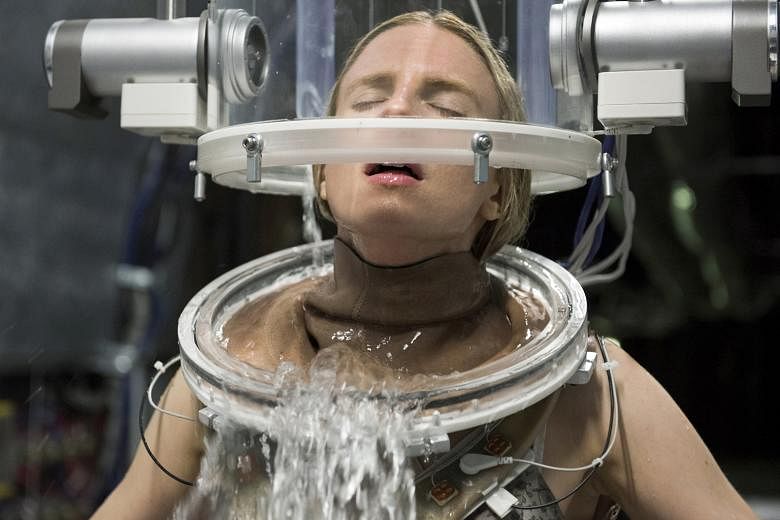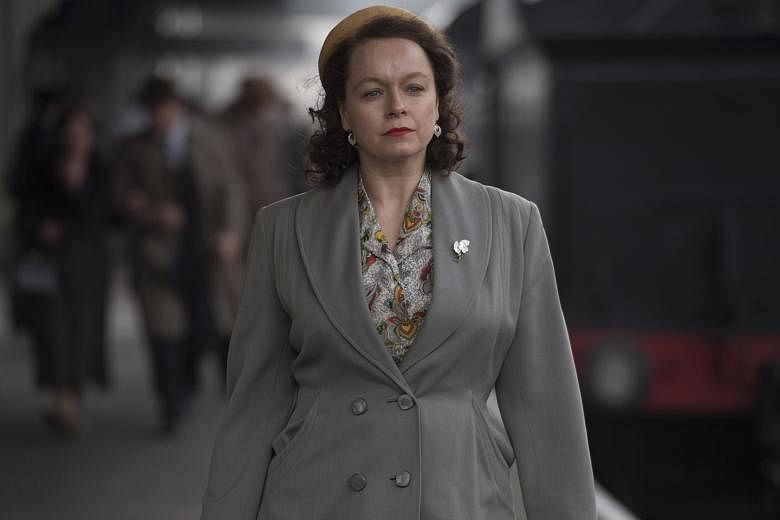If interpretive dance makes you break out in hives, the thought of using it as a plot device in a convoluted supernatural thriller would fill you with dread. So approach The OA with extreme caution.
The series is about a blind woman, Prairie (Brit Marling), who reappears seven years after vanishing from her home. She is inexplicably able to see but seems deeply troubled, and it is presumed that she was kidnapped and held captive during her disappearance (mild spoilers ahead for those who have not seen all eight episodes).
The show - itself cloaked in mystery because Netflix released it, uncharacteristically, with little warning or fanfare earlier this month - does a good job of reeling in the viewer as Prairie recounts what happened.
She takes a leaf out of the book of Scheherazade from Arabian Nights, telling her story piecemeal, in nightly doses, to a group of misfits from the local high school - four students and a teacher.
The tale-within-a-tale structure is skilfully deployed. It sows the seeds of an intriguing epistemological uncertainty and also allows for highly effective suspense-building as Prairie weaves a gripping yarn about being captured and experimented on like a guinea pig along with four others.

Their captor: a man obsessed with studying near-death experiences such as one she survived as a child, and which the show treats as a mystical phenomenon as much as a physiological one.
But her absorbing tale and the series as a whole begin to unravel about four or five episodes in, when it becomes clear that The OA is going to struggle to resolve its many elements into a coherent whole.
Maybe the writers realised this, too, and decided to introduce The Movements, a risible interpretive dance-type routine, into the mix.
If it sounds bizarre, that is because it is. But the goofy moves somehow become a key plot driver that enables the creators to reverse-engineer the ending they want.
Unfortunately, that ending might also be one of the dumbest series finales of the year - it will take quite a lot of self-control not to giggle whenever Prairie and others bust out these moves, which are presented with deathly seriousness.
Yet the show seems oblivious to how daft it all looks, perhaps dazzled by its own profundity as it alludes to various half-baked pseudo-philosophical and mystical ideas.
A more straightforward thriller is BBC crime drama Rillington Place, which tells the true story of John Christie, the serial killer responsible for a string of grisly murders in London in the 1940s and 1950s.

Tim Roth and Samantha Morton turn in understated but chilling performances as the mild-mannered murderer and his blindly loyal wife Ethel.
Ethel ignores hints that her husband is not who or what he says he is and eventually becomes one of his victims, her rotting corpse discovered, along with seven others, in the walls, floorboards and garden of their squalid flat in Rillington Place.
The three episodes tell the story from the points of view of Christie, Ethel and the couple's upstairs neighbour Tim Evans, whose wife and baby were also among the murdered.
Christie is the monster, of course, and Evans - wrongly convicted and hanged for his wife's death - one of his most pitiful victims.
-
VIEW IT / THE OA
-
Netflix
2.5/5 stars
-
RILLINGTON PLACE
-
BBC First (StarHub TV Channel 522), available on demand, and BBC Player
3.5/5 stars
Yet it is Ethel who offers the most fascinating character study, and the show has much more interesting things to say about the Christies' marriage than the mechanics of the case, which are well-documented.
It thus glosses over the question of why or how the man became a sadistic killer, apart from the briefest hints at deep-seated misogyny, sexual perversion and narcissism. Also omitted, bizarrely, is Evans' low IQ, which would have better explained how he bungled his defence or how easy it was to dupe him.
Instead, the drama takes its time sketching out the portrait of a toxically dysfunctional relationship, one in which the husband is a brazen liar and fabulist and his wife knows it.
He even tries to gaslight her after she follows him on one of his secret night-time excursions, attempting to convince her she had dreamt the whole thing up.
He does not succeed but, astonishingly, it does not matter: Ethel ends up ignoring this and all other warning signs (including unexplained holes in the yard, blood stains and foul smells) to stay with Christie anyway, apparently more concerned about his wandering eye.
What's scarier than a serial killer? That there's a woman who loves him.



